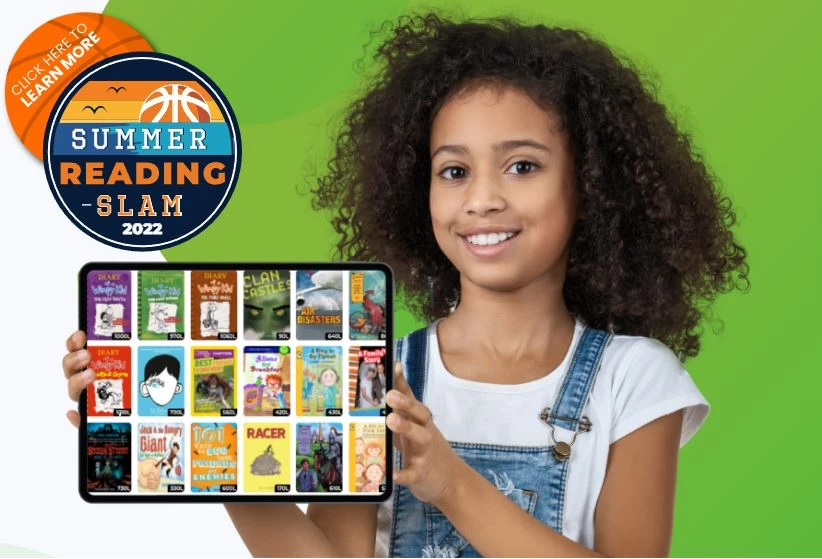

Most kids want to grow up fast – they want to run before they’re steady on their feet walking, and swim in the deep end before mastering basic strokes. Little kids may ask to see movies that are meant for older kids (or adults!), and they’ll likely want to drive before their feet could reach the pedals. When it comes to reading, the same drive to go above and beyond what they are ready for applies. Beginning readers often want to read books that interest and excite them, but which are well beyond their reading level. Wanting what comes next can be motivating – it could get the crawling toddler to walk, or the budding swimmer to pass her deep water test. As teachers and parents of beginning readers we could capitalize on this motivation and accelerate learning so kids could quickly get to the books they want to read on their own.
There are a handful of essential conditions and skills that support developing readers. Conditions pertain to the systems and environments we set up for kids to support reading acquisition; skills are the “how to” – the nuts and bolts of reading.
ESSENTIAL CONDITIONS FOR READING SUCCESS: Access and Choice
ACCESS
Pre-readers and young readers need access to great books. From the womb and onward they should be hearing outstanding stories, and as they grow they need to have access to tons of titles at their independent level. The difference between new and seasoned readers is quantity. Developing readers need lots and lots of titles because they fly through these short texts in minutes. Nothing is more tragic than seeing a kid stuck with the same 8-page book in his book baggy for weeks at a time with no variety.
Pro Tip: Instead of having students take one book at a time and running from their seats to the library every few minutes, organize the library with well-stocked book baggies so students are taking a group of 6-8 books at a time. This will keep the reading fresh as they sail through dozens of books per week.
CHOICE
One of the most fundamental aspects of the human experience is our ability to have opinions and act on them. We have tastes, preferences, dislikes, moods, etc. For kids – especially kids in school – so much of their day and lives lacks choice. We tell them when to wake up, when to eat, when to go move from point A to point B. Having the opportunity to make choices is empowering for kids, and we should encourage it.
Pro Tip: There are many reasons why you should provide kids with the opportunity to select what they read. In addition to giving kids choice in physical library spaces, there are also some great reading apps that provide kids with virtual libraries. Whether physical or virtual, kids should have opportunities to select books that match their level and their interests. Check out LightSail and Antares Reading to explore titles across a range of reading levels that kids could choose from!
ESSENTIAL SKILLS FOR READING SUCCESS: Vocabulary, Phonemic Awareness & Fluency
VOCABULARY
More than ten years ago, researchers published The Early Catastrophe: The 30 Million Word Gap by Age 3, bringing to the forefront the importance of talking to and listening to kids starting in infancy. In brief, they found that kids from high Socio-Economic Status (SES) families with well-educated parents heard and spoke 30 million more words in their first three years when compared to their counterparts from low SES, less educated families. The old adage “Children should be seen and not heard,” should be obliterated once and for all, as we know what children need is a language rich environment where they are spoken to, listened to, and where they have a lot of time to practice their language skills and vocabularies.
Pro Tip: As a teacher or parent of young kids, step up your game! Post and use charts like this one, and make deliberate choices with the books you read and the words you use, to constantly stretch the vocabulary of the little ones in your midst. The book, Bringing Words to Life offers countless tips and strategies for teaching vocabulary to kids, and to me is a must have for every teacher’s bookshelf. There are also several fun and easy to find apps to help build vocabulary for young kids. The key with all of these is repetition and usage – do NOT shy away from using big (enormous, gigantic, colossal) words with those that are diminutive in stature. The more they hear and say the words, the more they will own them for life.
PHONEMIC AWARENESS
This refers to the ability to hear and manipulate sounds. It’s knowing that the word dog has three distinct sounds (d-o-g), and that the word elephant has three distinct syllables (el-e-phant). Besides the sheer joy of it, these are some of the reasons why songs and nursery rhymes are so vital to early childhood classrooms – they help train kids’ ears to the nuances of language.
Pro Tips: Help your students tune in to the sounds that they hear by providing a rich variety of sound-based activities in your classroom. Clap out the syllables, stretch out the words, and help kids understand what their lips, tongues, teeth, mouths and throats are doing for the different sounds they make! There are some great tips for building phonemic awareness here and here, but nothing beats seeing it in action. This ALL contributes to helping students become more prepared for reading. For older students still learning to read, or for students with learning challenges who might be struggling, there are several interventions and suggestions for how to help older kids strengthen important skills.
FLUENCY: Fluency is about two things: speed and expression. The danger of only putting too-hard books in front of kids is that their fluency is slowed down to such an extent that it gets in the way of comprehension. If it takes a minute to read a sentence with a dozen words, for example, then by the end of that sentence the reader will likely be unsure of what s/he read. If a reader briskly moves through text and attends to the punctuation – raising the voice up a bit for question marks, using different voices for dialogue, pausing after periods, etc. – then s/he will likely understand what they read. In this way, fluency and comprehension are closely linked.
Pro Tip: Give kids a jump start by teaching them the most frequent words. This handy dandy starter kit of the first 100 words is a good place to start. By memorizing these words, kids will be well on their way. From here you could also explore the next several hundred words – first by learning to read them, then spelling. There are some useful guidelines to keep in mind as well: by the end of 1st grade a student should be able to read 60 words/minute, by the end of second grade, ninety words. Use these as guide posts – if kids fall far short of these targets, they might be reading a book that is too far above their level. Finally, have fun with reading and help kids bring expression to the words they read. Watch the Crazy Professor Game which emphasizes reading with (zany) expression, and then try it with your child or student. It’s fun, and gets the big idea across that reading should be expressive!
And finally…help kids build stamina
Make time for reading, and continue to extend it to help kids build their stamina. Students need consistent, daily time to read at school, and the time should be stretched as the year goes on. Think of a marathon runner’s regime – they start small and add distance incrementally. The same applies for readers.
Pro Tip: Set a public timer – preferably something that could be seen and/or heard by everyone, like on a Smartboard – and add 1 minute per week. Your first graders reading for 10 minutes at a stretch in November could be reading 20 minutes at a time by February. You’ll know you are doing it right when they groan as the timer goes off. Try one of these in your classroom or home so kids could see and feel and experience time being stretched! Before you know it, your kids will be putting the pedal to the metal and diving into the deep end…on their own!
Mitch Center has spent the past 20 years working in a variety of roles and capacities in the field of education, in both district and charter schools. He began his career in the field as an AmeriCorps Volunteer in 1996, and worked as a teacher, camp director, VP, principal and coach before joining Newark Public Schools as Assistant Superintendent in 2012. In this role, he coached and supported 14 school leaders who lead K-8 schools across the city of Newark, New Jersey. As a father of school age kids, and as someone who has visited hundreds of classrooms and schools, he believes deeply that all great schools have one thing in common: outstanding adults who make magic for the kids they serve.
Posted on 2.Feb.17 in Literacy Strategies




